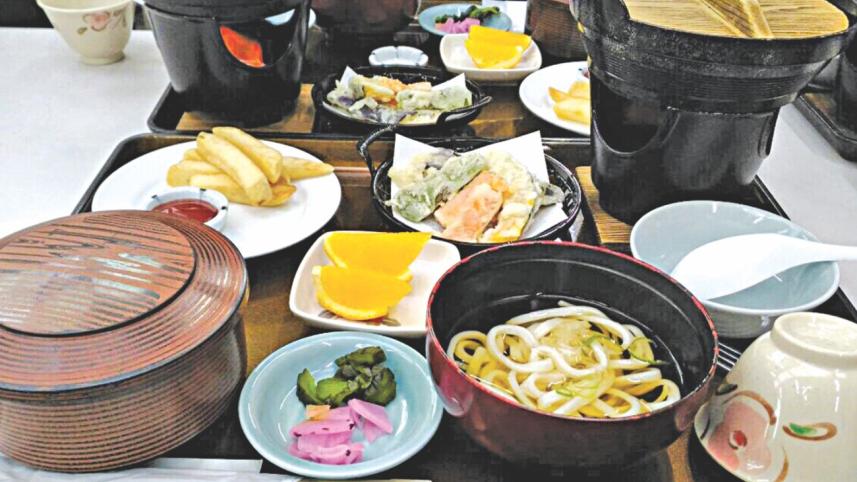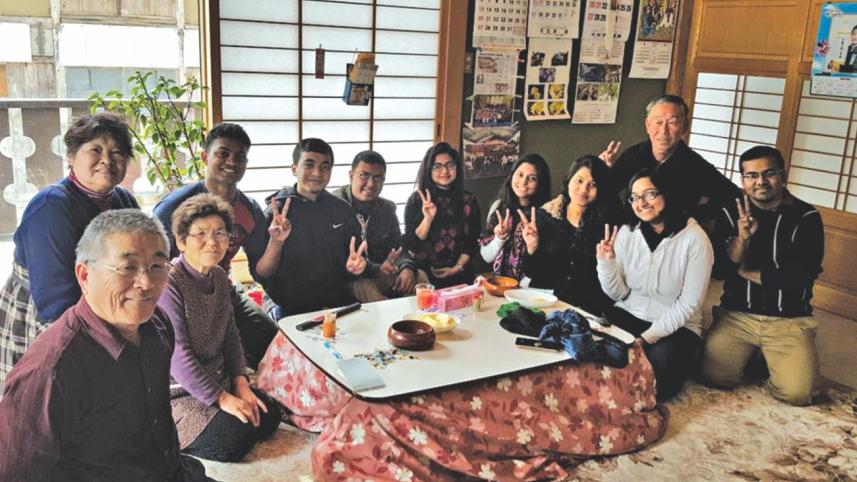In the Land of the Rising Sun

After a gruelling 16 hour long journey, all I wished to do was get to the hotel and snuggle up in a blanket. Our coordinators, however, would have none of it. We had already set foot on the Land of the Rising Sun and would get the amazing opportunity to explore the land until it set, every day, for the next ten days.
We were welcomed by ASIMO, the world's most advanced humanoid robot, as he put on a show for us at the Miraikan National Museum of Emerging Science and Innovation. All 118 of us high school students, young adults and supervisors from SAARC countries were mesmerised to see Japan's advanced technology up close. We then visited the 45th floor of the Tokyo Metropolitan Building, with a view of the likes of the Tokyo Skytree and Tokyo Dome.
The next morning, we were briefed on what exactly the people-to-people youth exchange programme fully funded by the Japanese government, JENESYS2015, was aimed for. Their goal is to promote mutual trust between the people of Japan and the Asia-Pacific region and also a global understanding of Japan's culture, environment, history, society and much more.

We walked straight into a high school anime for our school exchange. Toyama High School is a super science high school, which means that its students have the freedom and facilities to conduct research by themselves. My fellow Bangladeshi delegate Sarina Ashraf and I were grouped with three Japanese students to tour this enormous facility. They had endless clubs, the most interesting one being the Kendo (modern Japanese martial art) Club. I still don't get why some of its members were screaming like they had their last piece of pizza stolen but it was cool to see them in action. The day ended with cultural performances by all eight countries and a thank you speech by fellow Bangladeshi delegate, Sheikh Rifayet Daiyan Srijon. Meanwhile, the young adults had visited the Tachikawa Disaster Prevention Center to receive hands-on experience of disaster damage mitigation practices.
The main theme of our programme was "Environment" and so we were taken to the Shibaura Water Reclamation Centre to learn about how Japan uses microorganisms to clean water. While the rest of us were too busy trying to survive the harsh rain and freezing temperatures, fellow delegates Debolina Chakraborty and Saquib Tanzeem fired away questions at our guide so that we could walk back with in-depth knowledge about water purification.

Our time in Tokyo was up and us high school students parted ways with the young adults as we boarded the Shinkansen (Japan's ultra-fast bullet train) to Fukushima. The view from the window changed with amazing speed from a bustling city filled with high-rise buildings to a quaint snow-covered countryside. We stayed at a ski resort in Minami Aizu Town, and had the best time ever playing in the snow and riding snow mobiles.
A biomass fuel boiler in the Takaetsu Snow Cavern caught our interest since it used snow for their cooling system and incinerated wooden chips for their heating system. Japanese people really know how to turn waste into resource.
The trip to Tsuruga-jo Castle took us 600 years into the past. The breathtaking castle tower had been demolished so many times over the years but the perseverance of the Japanese people led to renovation of the magnificent historical site. Inside the castle was a museum filled with artefacts dating back to the age of the Samurai. Later, we sat down to paint "Akabeko" which are legendary red cows that are found as traditional toys in the Aizu Area.
Later that day, we were introduced to the Japanese host families we were to stay with for one day and two nights. The home stay aspect of the programme was placed in order to deepen our understanding of the Japanese lifestyle. Our main line of communication with our host parents was a string of "Okays" since that was the only English word they spoke, but that, paired with their loving hospitality was enough to make us love them as our second family. They were elderly people yet so fit, all thanks to their healthy food and lifestyle. Folding origami, eating traditional Japanese food, forgetting to take off our slippers on tatami floors —everything we did helped us learn more about the Japanese way of life.
After a workshop to create an "Action Plan" for what we were to do back in our countries with the knowledge gained in Japan, we moved back to Tokyo. There, we visited the Pasona Urban Farm to observe the eco-friendly utilisation of urban facilities.
The programme ended with a reporting session in which we gave presentations in front of the ambassadors of respective SAARC countries, officials from the Ministry of Foreign Affairs in Japan, and also JICE (Japan International Cooperation Center) officials.
After our return back to Bangladesh, we were personally invited to the residence of the Ambassador of the Embassy of Japan in Bangladesh to present about the programme. Japan offers Japanese Government (Monbukagakusho) Scholarships for those who wish to pursue their higher studies there, which are given especially to students recommended by the Japanese Embassy.
Japan had always been a dream destination for me and to have gotten this surreal opportunity makes me want to do nothing else but say "Arigatou-gozaimasu" to the wonderful organisers of JENESYS2015.
Mayabee Arannya is a confused soul still searching for a purpose. Give her advice on life at facebook.com/mayabee.arannya



 For all latest news, follow The Daily Star's Google News channel.
For all latest news, follow The Daily Star's Google News channel.
Comments